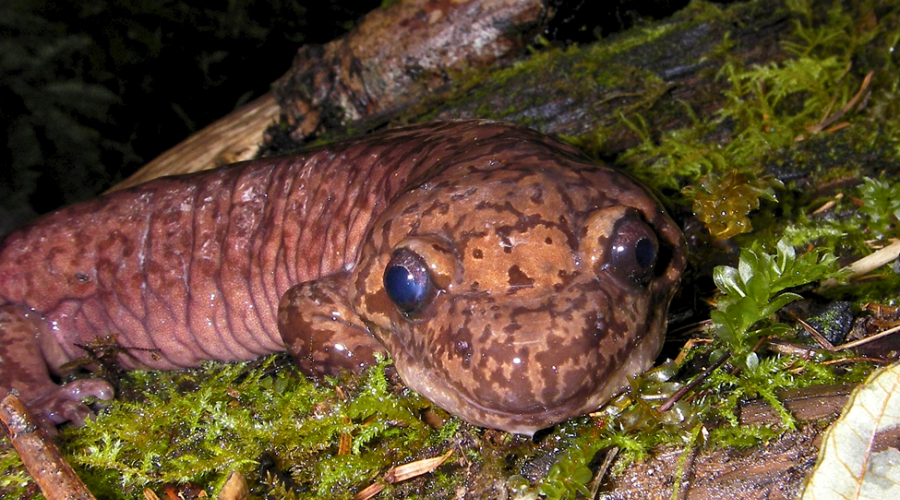Dicamptodon tenebrosus
If you ever peer into a half-rotted log you might be so lucky to find a slippery pair of eyes staring back at you. If you’re extremely lucky those eyes could belong to a Pacific giant salamander (Dicamptodon tenebrosus). Usually seen wriggling through woody debris or eating a mildly toxic banana slug, these marbled beauties are found throughout western Oregon. Pacific giants are observed most frequently in the Cascade Range and coast range south of the Yaquina River. Locally they have been observed in the Rogue River watershed, with most individuals living within 50 meters of a body of water. However, females may migrate to suitable streams for egg-laying. They can retain gills and remain aquatic for their entire lifespan, called neoteny, or if conditions require it, metamorphose into terrestrial adults. After leaving the cold water refuge, the terrestrial adults girth up to survive life on land, with some specimens reaching a whopping 14 inches!
Keeping forested streams cold and shaded is important for salamander abundance. Populations abound with increasing riparian vegetation and rock coverage, and decrease with warmer temperatures and increased water velocity. Aquatic adults tend to prefer cold mountain streams and lakes, while their terrestrial counterparts utilize refuge sites such as decaying wood, burrows, or under large rocks.






